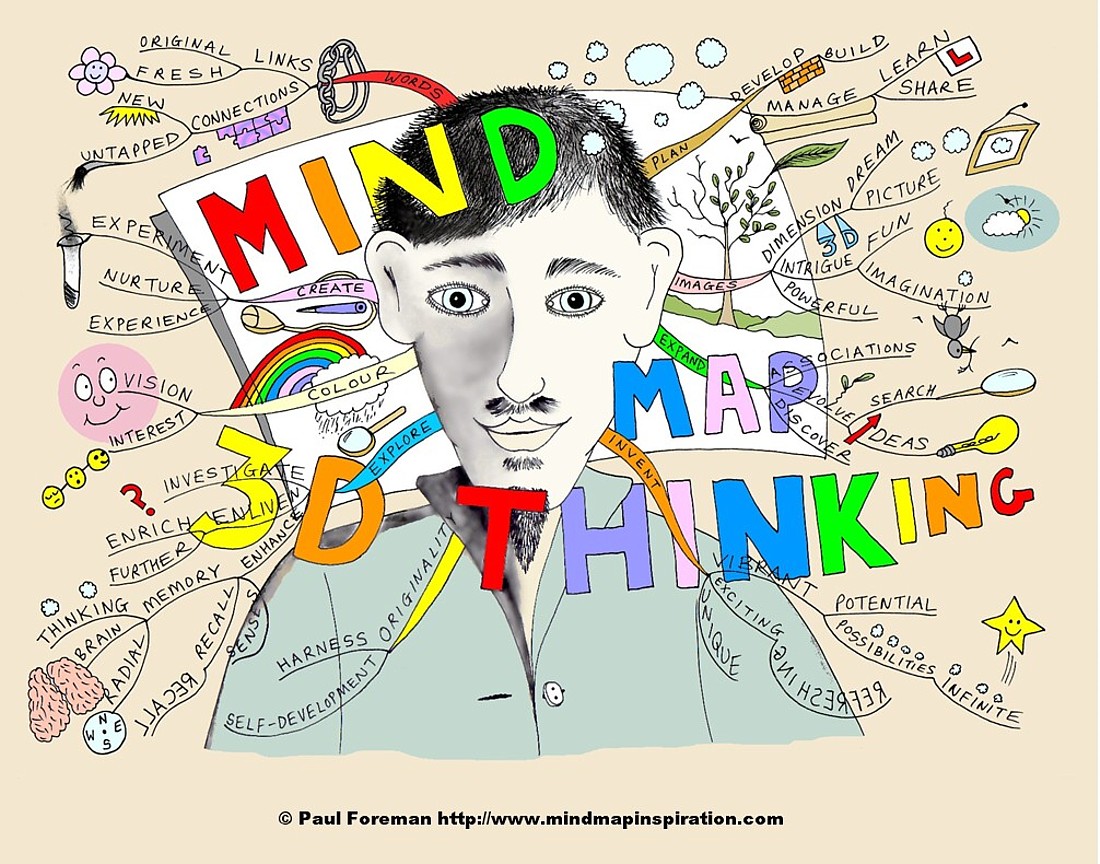Hello everyone :)
We could see creativity as a process of divergent thinking followed by convergent thinking.
Convergent thinking takes all the information and possibilities you have come up with and turns it into a solution. Most people are good at either divergent thinking or at convergent thinking, but usually not at both. For example, if you are given a multiple choice question, then you would have to use convergent thinking because you are trying to find the correct answer to that question.
On the other hand, divergent thinking involves brainstorming, playing with the problem, looking for alternatives. If you were given a question which asked for new ways in which something could be improved, then you would use divergent thinking because you are required to provide more than one answer to something where there is no predefined “correct” answer.
Mind Mapping, introduced by Tony Buzan is a great tool for idea generation and brainstorming. It enhance both sides of the human brain and widely used in taking notes, research or generating new ideas. A creative Mind Map is able to stimulate and create interest to the individual and also to the viewer.




Examples of Mind Map
Logical Mind Map
The Logical Mind Map is directly connected to stereotypes. The Logical mind map comprises of solely stereotype words. Which means that every word or image that is put within the mind map is directly related to the central subject through its links.
Associated Mind Map
Using an associated mind map we are able to generate random words and also show the links between words that seemingly have no connection.
Logical Mind Maps & Stereotypes
Before beginning a Logical mind map we have to understand what a Stereotype is; below is the definition of the word.
Definition of Stereotypes (ster·e·o·type)
A conventional, formulaic, and oversimplified conception, opinion, or image. One that is regarded as embodying or conforming to a set image or type.
The Rules Of Logical Mind mapping
-Always have your SUBJECT in the center of the page.
-Try to make the subject more dominant than the rest of the words and images in the mind map.
-Decide on the main categories of the subject before executing on mind map.
-Try to have the different categories in different colors, to make it easier to identify.
-Try to use drawings or images to make your mind map more interesting and personal.
-The ideal mind map should be shaped like the roots of a tree, branching out from a center. (It is OK to repeat words or even interlink certain words)
-Try to make your mind map neat and easily legible. (REMEMBER one of the aims of the mind map is to create interest and to be able to access information easily)
Benefits of Logical Mind-Mapping Technique
-It is a concise way of listing and categorizing a mass of information.
-The relationship between each word will help trigger memories and greatly reduce the amount of note taking and assist in the understanding of the subject.
-The more interesting the mind map the greater the interest that the on looker will have in the information.
-The usage of images along side with word will again create interest for the mind map as well as assist in triggering a memory of the subject.
In the class, Mr. Razi gave us an A3 paper to draw a logical mind map of Mortar and Pestle based on the picture below:




Examples of Mind Map
Logical Mind Map
The Logical Mind Map is directly connected to stereotypes. The Logical mind map comprises of solely stereotype words. Which means that every word or image that is put within the mind map is directly related to the central subject through its links.
Associated Mind Map
Using an associated mind map we are able to generate random words and also show the links between words that seemingly have no connection.
Logical Mind Maps & Stereotypes
Before beginning a Logical mind map we have to understand what a Stereotype is; below is the definition of the word.
Definition of Stereotypes (ster·e·o·type)
A conventional, formulaic, and oversimplified conception, opinion, or image. One that is regarded as embodying or conforming to a set image or type.
The Rules Of Logical Mind mapping
-Always have your SUBJECT in the center of the page.
-Try to make the subject more dominant than the rest of the words and images in the mind map.
-Decide on the main categories of the subject before executing on mind map.
-Try to have the different categories in different colors, to make it easier to identify.
-Try to use drawings or images to make your mind map more interesting and personal.
-The ideal mind map should be shaped like the roots of a tree, branching out from a center. (It is OK to repeat words or even interlink certain words)
-Try to make your mind map neat and easily legible. (REMEMBER one of the aims of the mind map is to create interest and to be able to access information easily)
Benefits of Logical Mind-Mapping Technique
-It is a concise way of listing and categorizing a mass of information.
-The relationship between each word will help trigger memories and greatly reduce the amount of note taking and assist in the understanding of the subject.
-The more interesting the mind map the greater the interest that the on looker will have in the information.
-The usage of images along side with word will again create interest for the mind map as well as assist in triggering a memory of the subject.
-------------------------------------------------------------------
In the class, Mr. Razi gave us an A3 paper to draw a logical mind map of Mortar and Pestle based on the picture below:








